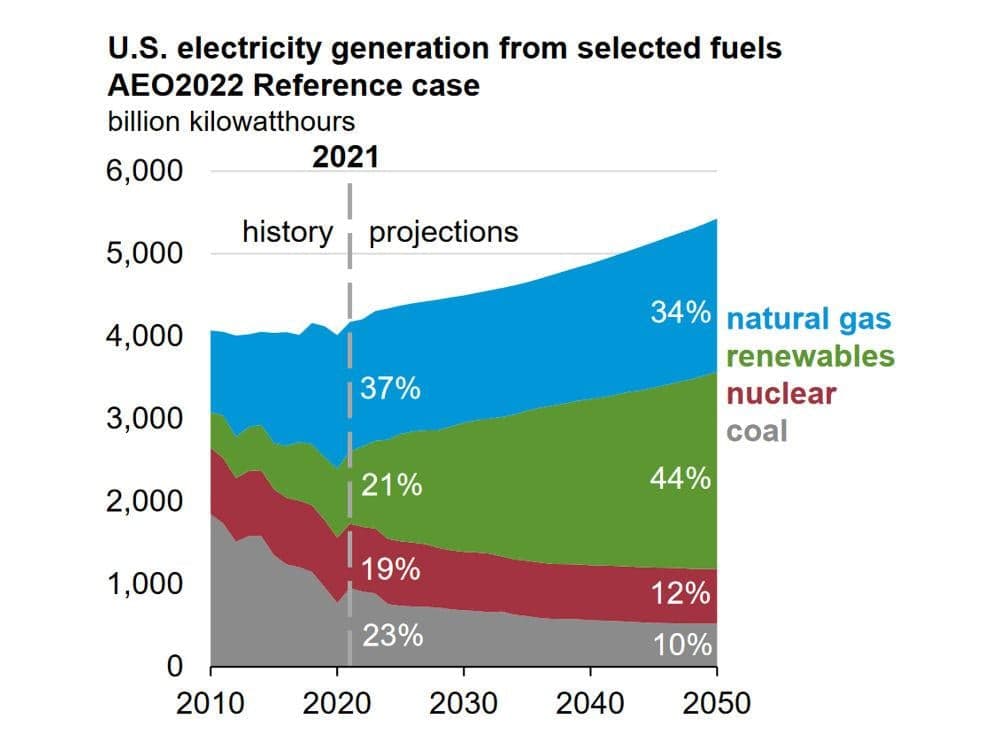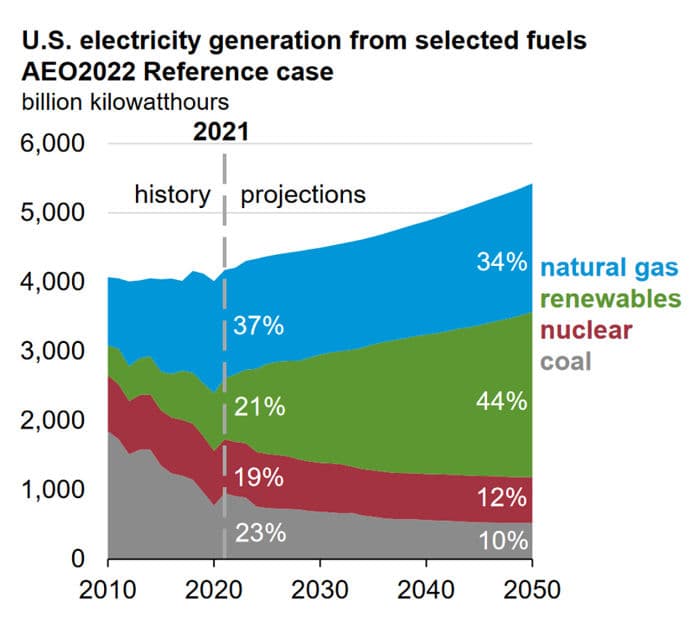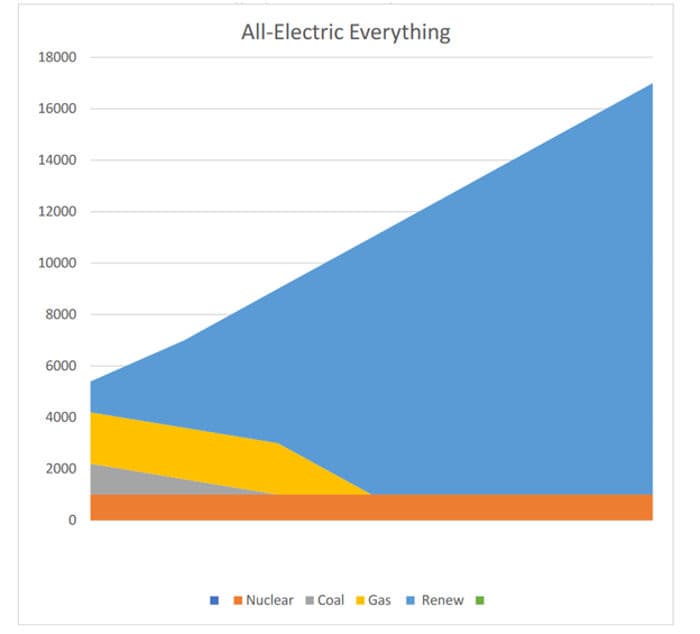The US Energy Information Administration Annual Energy Outlook 2022 does not reflect the Administration’s Net Zero by 2050 goal, as shown in the graph below. It also does not reflect the Administration’s “All-Electric Everything” by 2050 goal.

The Net Zero goal would require that both coal and natural gas be replaced as electricity generation fuels, coal by 2030 and natural gas by 2035. The “All-Electric Everything” goal would require increasing US electricity generation from approximately 5,400 billion kilowatthours to approximately 17,000 billion kilowatthours, to replace the current end uses of coal, oil and natural gas with renewable generated electricity and possibly some nuclear generated electricity. A rough approximation of the transition over the period 2021-2050 is shown in the graph below.

The electricity generation in 2050 would average approximately 2 billion kilowatthours per hour, but the peak hourly generation requirement would be approximately 5 billion kilowatthours per hour. The EIA AEO 2022 estimates that the renewable generation in 2050 would be approximately 60% solar and 40% wind, which is a significant shift from the 2021 ratio of 70% wind to 30% solar.
Current utility renewable generation capacities vary seasonally, with wind experiencing a capacity factor range of approximately 24 - 43% and solar a capacity factor range of approximately 18 - 33%. Therefore, based on the EIA projection of a 60% solar, 40% wind share of intermittent renewable generation, the average capacity factor of the solar and wind generator fleet would be approximately 28%. Therefore, generation of 17,000 billion kilowatthours annually would require intermittent renewable generating capacity of approximately 7 billion kilowatts. However, peak hour generation of approximately 5 billion kilowatthours per hour would require approximately 18 billion kilowatts of generation, or a combination of generation and long-duration storage. Storage or generation oversizing would be essential since solar experiences its minimum capacity factor during the winter peak period, while wind experiences its minimum capacity factor during the summer peak.
Solar generating capacity of approximately 11 billion kilowatts at 0.3 kilowatts per panel would require installation of approximately 35 billion solar panels over an area of 17 million acres, or 27,000 square miles. This area is slightly larger than the state of West Virginia. Wind generation capacity of approximately 7 billion kilowatts would require installation of approximately 3 million 2.5 MW onshore wind turbines, or some combination of onshore and offshore wind turbines. The administration has a goal of installing 30 GW of offshore wind capacity by 2030, which would represent approximately 0.4% of the projected 2050 wind generation fleet capacity requirement.
The US currently has approximately 136 GW of solar capacity and 140 GW of wind capacity installed, or approximately 1.5% of the generating capacity required to meet peak demand in the “all-electric everything” scenario. The bulk of this existing capacity has been installed over the past 30 years with the assistance of generous federal and state incentives. Installing the remaining approximately 98.5% of the required capacity over the next 28 years appears to be a daunting task.


